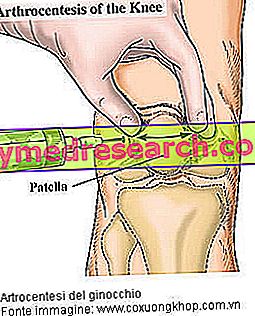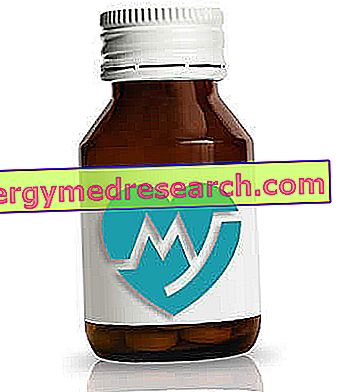What is synovitis?
Synovitis is an acute or chronic inflammation, serous or dry, of an articular synovial membrane (arthrosynovitis) or of a mucous membrane sheath (tenosynovitis). The symptoms of synovitis are characterized by pain, swelling (swelling), functional impotence and serous joint effusion. The causes of synovial inflammation are various, being represented by traumas, infections, metabolic disorders or rheumatic diseases. The diagnostic confirmation is obtained with the examination of the synovial fluid and with histological analysis by needle-biopsy.
Conservative treatment
The conservative treatment of synovitis includes rest, ice packs, application of an elastic band and anti-inflammatory drugs. Drug therapy may include the administration of antibiotics and anti-inflammatories capable of alleviating pain, while a specific treatment may be directed to the cause of synovitis.
Local treatments should be reserved for joints that are not responsive to systemic therapy: the intra-articular injections of a drug allow to enhance or exert the pharmacological action of the product locally, reducing the undesirable effects. This method of administration allows reducing inflammation, slowing tissue damage and providing pain relief.
Some drugs that can be used intraarticularly are:
- corticosteroids (for the therapy of articular forms with an inflammatory imprint; recommended especially in the case where the affected site is the knee → see: cortisone infiltration);
- hyaluronic acid (in the case the other pharmacological therapies are ineffective and the pain persistent, or in the case of particular conditions that refer to the presence of the endogenous substance, such as the altered synthesis, the dilution secondary to the pouring or the degradation in the synovial fluid → see : infiltrations of hyaluronic acid);
- radioisotopes - osmic acid;
- orgotein (belongs to a group of water-soluble proteins, known as superoxide dismutase);
- some NSAIDs;
- some glucosaminoglucans;
- autologous concentrates of growth factors (experimental therapy).
Furthermore, special dietary supplements can be used to support conventional therapies to relieve symptoms of the disorder (for example: a chondroprotective supplement based on glucosamine hydrochloride, chondroitin sulfate and MSM). The synergistic association of glucosamine hydrochloride, with chondroitin sulfate and methylsulfonylmethane ( MSM ) is particularly effective for the solution of disorders related to joint diseases: the protective response of chondrocytes is increased, as is the health of cartilage.

Therapeutic arthrocentesis
In addition to the diagnostic application for synovitis, the arthrocentesis is a technique that can be applied in the therapeutic field in order to drain the "pathological" synovial fluid and consequently reduce: the intra-articular pressure, the chemical mediators involved in the inflammatory process, toxic chemicals, and materials such as pus, blood and microcrystals present at the site of inflammation. The technique involves the simple introduction of a needle into a joint and the consequent aspiration of the synovial fluid.
Chemical synovectic
The therapeutic technique involves the local injection of a particular substance that destroys the pathological synovium; it is indicated in case of active and persistent inflammation, despite systemic treatment and corticosteroid infiltration. The substances used are triamcinolone acetonide and osmic acid (it reacts with proteins and lipids of the synovial membrane causing tissue necrosis).
Radiosinoviortesi
The treatment involves the use of isotopes which, due to radioactive decay, give rise to β energy emissions, sufficient to penetrate and remove the synovial tissue, without damaging cartilage and skin. The isotope is conjugated to a colloid to prevent it from coming out of the joint and is biodegradable to avoid tissue granulation. Examples of isotopes used in this therapeutic technique are: yttrium 90, rhenium 186, erbium 169.
The therapy is carried out in adequate environments for the control of radioactive emissions and always requires a verification of the homogeneous distribution of the radiopharmaceutical and cartilaginous integrity. Possible side effects related to radiosinoviortesi include general reactions from radiation and tissue necrosis.
Surgical treatment
Partial and total synovectomy
In particular chronic conditions it is possible to resort to an operation that involves the partial or total removal of the synovial membrane affected by joint pathology: surgical treatment is not invasive and allows the natural regeneration of the synovium in the weeks following the operation. This surgical ablation can be practiced in the case of inflammatory lesions of the joint (eg rheumatoid arthritis), recurrent blood shedding in the joint and if the other local therapeutic means (corticosteroids, radioactive isotopes, antibiotics etc.) prove to be ineffective. Surgery can be performed in arthroscopy, which does not allow a complete synovectomy, but is better tolerated and makes post-operative recovery faster, such as walking in the case of the knee.
Arthroscopy in a nutshell
Arthroscopy is a minimally invasive surgical procedure that helps to highlight, diagnose and treat joint problems. This modern technique uses an endoscopic instrument called an arthroscope (a thin and rigid tube with the diameter of a pen, equipped with an angled lens, which - connected to a fiber optic cable and a camera - makes it possible to observe the structures on the television screen joint).
The arthroscope is introduced by the orthopedic surgeon through a small incision in the patient's skin, to assess the type and severity of the lesion and, if necessary, repair or correct it, without having to resort to a traditional surgical approach. The arthroscope is positioned in the joint and allows the visualization, for example, of the inside of the knee (the meniscuses, cartilages and cruciate ligaments) and allows surgical intervention to be made on any pathological lesions. The procedure therefore has a diagnostic and therapeutic significance: it is useful to clarify the nature of a joint effusion, to alleviate symptoms and to limit joint damage in the case of septic synovitis. Arthroscopy enables fast and less painful post-operative recovery.
Rehabilitation after surgery
In the early days it is advisable to use two crutches to unload the weight of the operated limb; furthermore the patient can resort to the frequent application of ice packs. Physiotherapy can help you recover full movement and strengthen your muscles (recovery of joint mobility is generally achieved in 2-3 months). During the checkups, the orthopedist can perform an infiltration of hyaluronic acid and can prescribe a diet, if the histological examination has free detected the presence of uric acid (gout).
In case of rheumatic disease, it will be necessary to intervene with a targeted therapy.
Final considerations
The response to therapeutic treatments provided for the treatment of synovitis depends on several factors, which include the duration of the disease, the severity of the anatomical lesions and the suitability of the treatment.
Regarding the infiltrative treatment, several agents have been used, but few have been validated in the therapeutic application of synovitis. Sinoviortesi, however, represents a significant application in the management of joint therapy: the correctness of the indications and the rigorous observation of the procedure allow effective treatment of the synovitis, making it possible not to resort, in some cases, to conventional surgical procedures.



